The purpose of your factory exhaust system is to muffle as much sound as possible. With that comes power-robbing backpressure created by restricting exhaust gas flow from the tailpipes.
Aftermarket exhaust systems help you reclaim that power with less-restrictive performance exhaust components to add a little giddy-up to your rig along with more-aggressive exhaust notes in case anyone driving near you was wondering whether you mean business.
[Looking to buy? Learn how to choose your exhaust system here.]
Types of Exhaust Systems
The three most common types of exhaust systems are:
Cat-Back Exhaust Systems
Cat-back exhaust systems replace exhaust components from the catalytic converter back to your mufflers. These systems typically include new mufflers and tailpipes, but depending on your truck’s make and model, they can also come with a mid-pipe, X-pipe, H-pipe or a Y-pipe.
Cat-back systems, also known as DPF (particulate filter) back on diesel applications, are among the most popular exhaust upgrades for several reasons.
Adding one is a relatively simple modification that provides low-cost power gains, although the exact amount of horsepower depends on the remaining stock exhaust components and catalytic converter design. Better fuel economy is likely. Cat-back systems also sound tough and are usually emissions-legal because they incorporate your truck’s stock catalytic converter.
Axle-Back Exhaust Systems
An axle-back exhaust system includes all the components from the rear axle to exhaust tip. Although cat-back (and header-back) systems can deliver more power gains, there are benefits to opting for an axle-back system, including lower costs and easier installations.
Header-Back Exhaust Systems
Header-back exhaust systems replace everything from the header collector to the tailpipes. By replacing all exhaust system components, header-back systems allow for larger pipe diameters throughout of your entire system for greater exhaust flow. The downside is that these systems tend to be more expensive and tougher to install than comparable cat-back, DPF-back, or axle-back exhaust systems because you are usually replacing the entire system.
…
Exhaust Configurations
Single Exhaust Systems
The single exhaust system is the most common setup. This design uses just one set of exhaust components, including a muffler with an exhaust tip that typically exits behind the axle of the vehicle. Aftermarket single exhaust systems provide performance advantages over stock because of larger-diameter pipes and less-restrictive mandrel bends. These systems are less expensive and weigh less than true dual-rear exhaust systems.
Dual Exhaust Systems
Dual exhaust systems are arguably the most popular design. It features two separate pipes running from the headers all the way back to the exhaust tips, along with two catalytic converters (depending on the application and system) and two mufflers with their own exhaust tips.
Many performance enthusiasts prefer the two-muffler look, the distinctive growl, and the high-flow capabilities of two separate exhaust passages for each bank of engine cylinders.
If there’s a disadvantage to a dual exhaust system, it’s the potential for a pressure imbalance between the two sets of exhaust components. Uneven backpressure can cause one bank of engine cylinders to back up and make less horsepower than the other. Dual crossover systems incorporate a special “crossover” pipe to eliminate this problem. Crossover pipes allows exhaust gases to flow freely between two sets of pipe, balancing exhaust flow and eliminating excess backpressure on either side. The dual crossover exhaust system is generally regarded as the best performing exhaust but, in many cases, requires extra modification work to make them fit.
An X-pipe or H-pipe is required to marry your two exhaust pipes. Check out this video on X-pipes vs. H-pipes if you’re interested in learning the difference and which might be best for your truck.
A third option is a dual-exit exhaust system. They use the same configuration as a single exhaust system—one headpipe, converter, and muffler—but have two exhaust tips exiting from the muffler. There is no performance advantage, but many prefer the look of dual tips.
Aftermarket Truck Exhaust System Buyer’s Guide
Gibson Metal Mulisha Exhaust Systems
A rear axle-back dual-exit exhaust system for most full-size trucks and Jeep vehicles. They feature a black ceramic coated stainless steel chambered muffler, five-inch tailpipe diameter, and two head-turning exhaust tips.
…
Diamond Eye Performance Exhaust Systems
These single exhaust systems from Diamond Eye are a popular choice for truck owners. These stainless steel systems have mandrel-bent four-inch diameter pipes and include a perforated tube-style muffler that will improve the sound and performance of your rig.
…
Dynomax Super Turbo Exhaust Systems
These cat-back aluminized steel exhaust systems have three-inch diameter pipes and are super popular, low-cost, easy-installation options for truck owners looking for a quick aftermarket upgrade.
…
Magnaflow Pro-Series Diesel Performance Exhaust Systems
Choose from four- or five-inch diameter mandrel-bent stainless steel tubing designed to give you more horsepower, torque, fuel economy, and lower exhaust gas temperatures (EGTs). All Magnaflow products feature a lifetime warranty.
…
Flowmaster American Thunder Exhaust Systems
These header-back exhaust systems from Flowmaster provide the rich exhaust sound we’ve come to expect from the company, and provide exhaust flow upgrades with mandrel-bent aluminized steel tubing, a choice of single or dual mufflers, and are designed to improve both power and fuel economy.

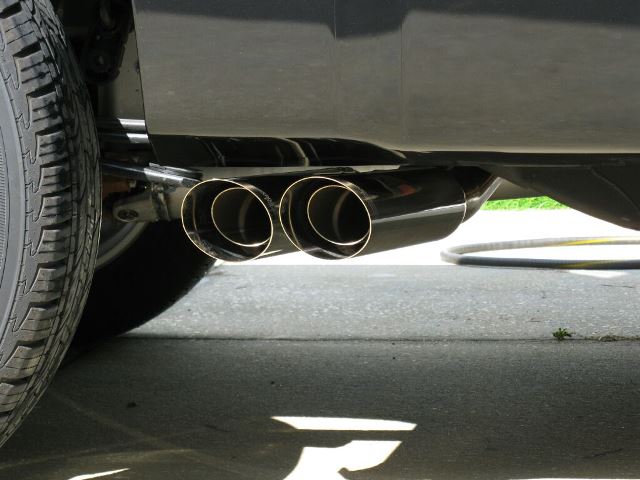
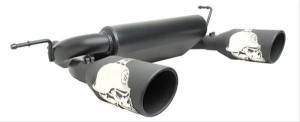
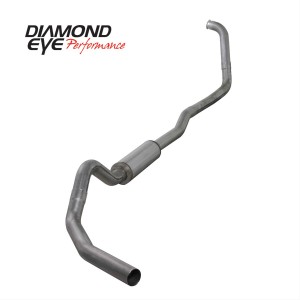
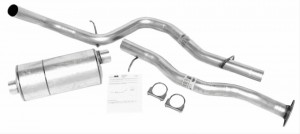
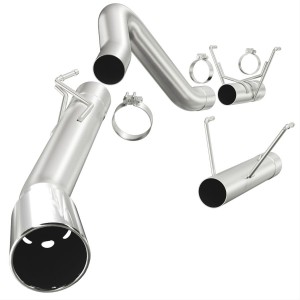
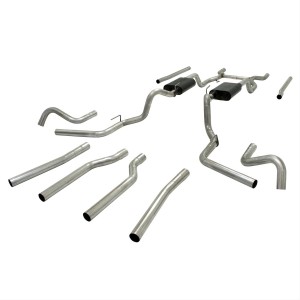
[…] there are a number of different types of exhaust systems the three most common are the axle-back exhaust system, the cat-back exhaust system, and the header-back exhaust system. Here […]
My husband’s truck is starting to deteriorate, and of its parts, that is being compromised is its exhaust system. I think my husband would be happy to buy the dual exhaust system because as you’ve stated here, this type of system features two separate pipes. I wonder where we can find a truck part delivery service.
Summit Racing Equipment will deliver the parts to you. http://www.summitracing.com Good luck!
[…] Performance Exhaust Vs Muffler Delete/Straight Pipe […]